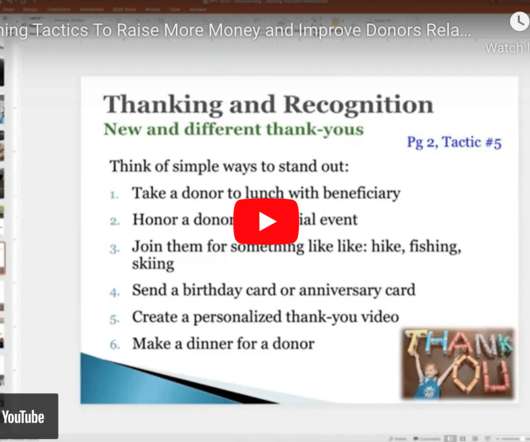Does Extreme Content Delivery = Learning?
Beth's Blog: How Nonprofits Can Use Social Media
MAY 23, 2013
Or do you learn better when you get a chance to process the content every 15 minutes by thinking about it quietly or talking with a peer? Now that could be hard reading, but Sharon Bowman’s “ Using Brain Science To Make Science Stick ” has been a terrific resource. And, what do you actually apply?















Let's personalize your content